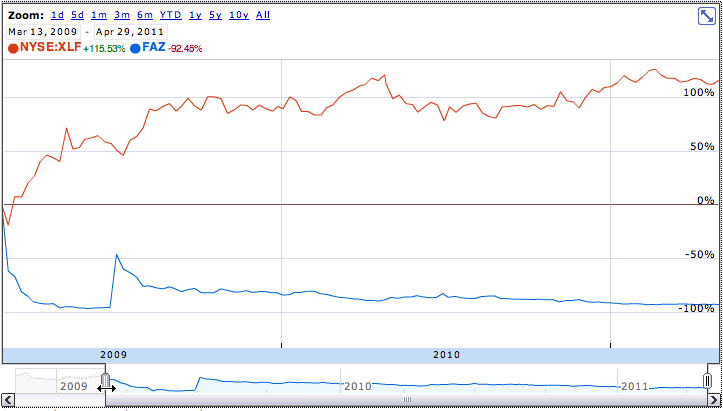These ETFs Display the Value of StopLoss Orders
Post on: 14 Май, 2015 No Comment

Recent Posts:
These ETFs Display the Value of Stop-Loss Orders
Investing actually involves risk. Choosing to become a shareholder does not imply that gains are simply a matter of holding long enough to realize one’s good fortune.
It follows that, in an unpredictable manner, good economic data can become bad news for the markets. Similarly, bad news can start dragging on stocks.
In truth, one cannot readily anticipate how market-based securities will react to a constant stream of information. Understanding this, should one always endeavor to buy the stock dips? Conversely, should one sell stock assets when broad market benchmarks have fallen a certain percentage from respective high points?
There are no easy answers here. If one professes to favor buying the selloffs, one would have difficulty succeeding in years when 10% corrections do not occur, and the dips are a meager 3% 5%. The same person would likely be eviscerated by 40% 50% bear markets, as there would be little capital left to buy during the horrific descent.
On the other hand, selling assets at 7%, 8% or 10% off a high-water mark could leave an investor floundering to determine how to re-engage, particularly in the “V-shaped” turnarounds of 2013 and 2014.
My advice is straightforward: Before you purchase any asset at any price, you must understand the precise conditions under which you would sell that asset.
For example, let’s say an investor believed in January 2014 that Energy Select Sector SPDR (ETF) (XLE ) would appreciate in value due to expected economic improvements in Europe as well as escalating tensions in oil-producing regions. This investor buys 400 shares of XLE for $34,000 at $85 per share with the knowledge that he would sell the exchange-traded fund 10% off the highest point it reaches in the time of ownership also known as a “trailing stop-loss” or if the fund falls below a 200-day moving average, whichever comes last.
In this particular example, XLE breached its 200-day trendline as well as fell 10% from its peak at roughly the same time. The investor would have sold for a small gain for $90 in September. Granted, the investment could have turned around on the day of the sale and gone right back to new highs.
Yet, the reason one sells for a big gain, small gain or small loss is to protect against a big loss. Here, further deterioration has occurred.
Another overlooked facet in the decision to take a big gain, small gain or small loss is the reality that the capital may be redeployed in a less risky, more productive asset. Let us assume the investor wants to reduce cyclical sector risk in his/her portfolio, and rotates the $36,000 ($34,000 + $2,000 gain) into the lower beta volatility world of utilities.
The erroneous assumption by those who do not value stop-loss orders or long-term trendlines is that the “sell” event results in missed opportunity. On the contrary, rotating into Utilities SPDR (ETF) (XLU ) provided greater opportunity with less portfolio volatility.
Equally worthy of note suppose the investor simply wanted to lower stock risk by redeploying the capital into intermediate-term treasury bonds. He would have profited with an asset allocation shift into iShares Barclays 7-10 Year Treasury Bond ETF (IEF ).
Are stop-loss orders perfect? Far from it. Is the 200-day moving average sacrosanct? Maybe to the technical analyst, but otherwise, it has plenty of flaws as well.
The reason a long-time money manager like myself uses these tools is because I recognize the emotional intelligence of maintaining one’s discipline and the mathematical sensibility of insuring against catastrophe. Applying insurance principles to the investing process no matter how one chooses to do it (e.g. stops, trendlines, put options, hedges, etc.) is more critical to one’s financial well-being than finding the next “biotech biggie.”
You can listen to the ETF Expert Radio Show “LIVE”, via podcast or on your iPod. You can follow me on Twitter @ETFexpert .
Disclosure Statement: ETF Expert is a web log (”blog”) that makes the world of ETFs easier to understand. Gary Gordon, MS, CFP is the president of Pacific Park Financial, Inc.. a Registered Investment Adviser with the SEC. Gary Gordon, Pacific Park Financial, Inc. and/or its clients may hold positions in the ETFs, mutual funds, and/or any investment asset mentioned above. The commentary does not constitute individualized investment advice. The opinions offered herein are not personalized recommendations to buy, sell or hold securities. At times, issuers of exchange-traded products compensate Pacific Park Financial, Inc. or its subsidiaries for advertising at the ETFExpert website. ETF Expert content is created independently of any advertising relationship.
investorplace.com/2015/01/etfs-display-value-stop-loss-orders/.














